The Doctor’s shack lies hidden in rural Japan, its location closely guarded by haikyoists and folk who like to explore. And for good reason – inside is a goldmine of pre-war medicines and medical books, dusty bottles and old rusty instruments.
The site itself is well documented in ruins literature, and especially so on the Japanese side of the internet. But as far as I know, this is the first time it has been written about in English. It took me a good 6 hours of research and the painstaking piecing together of clues to get an idea of the location.
I started with just a rough point on a prefectural map and a name – S診療所. Usually this is enough information to dig up some posts in Japanese and pinpoint the exact spot, but in this case it wasn’t to be. Every website I visited had gone to the trouble of erasing all mention of the location. Even in the pictures with the shack’s real address, the characters has been blurred out. It was clear this place was well protected.
Undeterred, I ploughed on, trawling Yahoo and Google for all mentions of the name. It was the early hours of the morning at this point and my friend and I were planning to leave the very next day to go and look for the shack. I dug up hints about the shack’s past, old pictures showing a river, a cryptic clue saying ‘it’s near the house where a God lives’ (神の住む家).
(Image source: Team Haikyo)
A tantalising trail of pictures on the Team Haikyo website showed the approach to the old medical clinic, but alas, no concrete details about how to get there. I was closer now though – a city name and house-dwelling God were on my side, but dawn was fast approaching. A thread on 2-channel had a match for my shack, but all the posts written were full of frustrating clues and half-baked information. For probably the first time in my life, the Internet was not giving me an answer.
After some time browsing 2-channel, I had the location narrowed down to a place beginning with ‘S’ and one with over a thousand years of history. With the help of Wikipedia, I filtered this down to a few matches in the prefecture and then took an intelligent guess.
“A 70% chance I have the right place”, I told my friend, rubbing my sleepy eyes.
“You’ve been up all night?? You’re mad!” he burst out.
“…I’m pretty sure I have it now. It’ll be worth it, I’m sure.”
Setting out on the train, we made the long trip to where I estimated our shack to lie. We happened to miss a local train that would take us to our destination, so during our hour’s wait, I busied myself quizzing local taxi drivers and train staff with my information.
“You know anywhere known as ‘the place where a God lives'” I asked in vain. It shouldn’t have surprised me that I was greeted with blank stares every time.
“Okay, what about this place? How much to go there?”
“Hmm… About 6000 yen I reckon”, retorted the group of taxi drivers, puffing on their cigarettes.
We decided to wait for the train. It was only another half hour or so to wait. And that mid-afternoon sun looked like it wanted to burn long and bright for some time yet.
Another train ride away, we hopped off at our destination. Some melting snow from the passing winter lined the roads. As we walked closer, I could do nothing but let out an audible gasp of relief and sheer thrill. I grinned ear to ear at my friend and flicked a single tear from my eye. The mysterious gate leading to the shack lay before us.
(Image source: Team Haikyo)
“That’s it!! That’s the path!”
Hurrying now, we trotted along the winding track and emerged in a cluster of trees. The towering 2-floor doctor’s shack greeted us with a groan and we stepped carefully into its walls. It was just as the pictures had promised.
We only had an hour of light remaining, so it was going to be a pretty rushed time. I busied myself with capturing video while my friend tested out his DSLR. After zipping around the first room, we entered the doctor’s office. Two holes in the wall – one for receiving orders and the other for giving patients their medicine – seemed to glow with the remaining light and rows of old glass bottles filled with strange substances glimmered against the wall.
Nearly all the bottles were labelled in Latin with the equivalent Japanese underneath. Along the main wall were huge bottles containing all sorts of substances I bet my old science teachers wouldn’t know, but the label above them – 普通薬 – told me that they were medicines for ‘regular use’. At the bottom of the cabinet were some drawers that I failed to notice in the fading light labelled as 毒薬 – poisonous medicines. Judging by the size of the drawers, I’d say they were filled with mostly small bottles, and I reckon this next one may have originally had its home in the drawer of poisons.
Calmotin. It stood on the shelf alone, beckoning me to take a nice isolated shot. Having researched the name, I now know why somebody positioned it so artfully. This drug is notorious in Japanese history for being used to commit suicide.
It seems this substance is better known as Bromisoval, a hypnotic and sedative.
自殺目的などで大量服用し急性中毒を引き起こす場合があるが、致死性は低い。しかし、小説家・芥川龍之介は昭和2年に「カルモチン」で自殺を完遂した。太宰治も「カルモチン」で何度も心中未遂をしている。
Apparently it isn’t easy to consume enough of the chemical for it to be fatal, but novelist Akutagawa Ryunosuke succeeded in killing himself by acute poisoning using the drug and the writer Dazai Osamu also used Calmotin many times to try and commit lover’s suicide. According to this article, it was originally manufactured by Takeda Pharmaceutical Co., Ltd., but production has since been halted.
Not only that, but Calmotin was used in the infamous case of ‘poison woman’ Sada Abe, remembered for erotically asphyxiating her lover and severing his genitalia for loving him so much. Her story has since been made into the controversial film ‘In the Realm of the Senses’ (愛のコリーダ). Quite a history attached to this Calmotin stuff then.
Various other bottles with names I have no hope of deciphering begged to be photographed. It turns out that a fellow explorer by the name of Kuromax has written about many of the medcines. Well done to him or her for all that work! Unguentum Wilonl, then, is reported to be used mainly on the skin to prevent spots. It is also anti-inflammatory. Nice. Turns out the other bottle is ‘Lycopodium’ (not Ectopodium as I originally misread) and is a type of plant used as a dusting powder for things like ulcers and eczemas – thanks to Peter in the comments!
Bismuthum Subnitricum is some type of medicine for internal disorders and Chininum Aethyl Carbonicum is apparently used as an anti-malarial drug. Wouldn’t want to mess around with these things…
It seems that this medical clinic was active before the Second World War. Kuromax found a woman’s magazine dated 1935 on their trip and I came across a fair few really old books myself. The rotting state of the shack and the fact that its front porch has already collapsed doesn’t inspire confidence that it’s going to be around forever. The stairs were at a frighteningly odd angle too, and I really had to tread carefully as I creaked my way up them.
But not just decay, there also seems to be thievery at play here. The messy random piles of papers and scrambled books I encountered were just the start – going by the photographs taken by other explorers, there seem to be quite a few missing bottles and other objects that have vanished. Despite its hidden location then, a fair few people seem to be making the trip here. It’s a real shame that this place is bearing the brunt of vandals and other less respectful visitors. I do hope it doesn’t get much worse.
Amongst the mess, there were also aged photographs. I didn’t have a lot of time to sift through the rubble because I was sitting on the creaky second floor in darkness by this point. My friend was waiting downstairs and I was spending half my time worrying about the floors – a huge gaping hole just feet away from me didn’t give me the best of reassurance.
There was also what looked to be a box of numbered blood samples and tweezers nearby. I was almost reaching out to pick up one of the little glass plates before I realised what they were and why the metal tool sat blatantly on top. Snatching my hand away and heeding the calls from my haikyo buddy below about missing the last local train, I paced back down the wooden stairs.
We had just enough time to snap a few more shots of the nearby scenery before running to the rural, gate-less train station. With no time for tripods, this below picture was the best I could do.
It had been a fleeting encounter, but one definitely worth the time spent researching and travelling there. And in some ways, I feel as though I’ve learnt a little about savouring the exploration. It isn’t all about hitting up a place, shooting the photographs and going onto the next, I realised. All that time browsing the Internet. The frustration of trying to decipher cryptic clues and being led to dead-ends. Of losing sleep. All of that was part of the experience. It really felt like I’d earned the right to visit this wonderful piece of history and document it. And perhaps, just maybe, I’m a little closer to being able call myself an explorer because of it :).
Finally, here’s the video experience below.









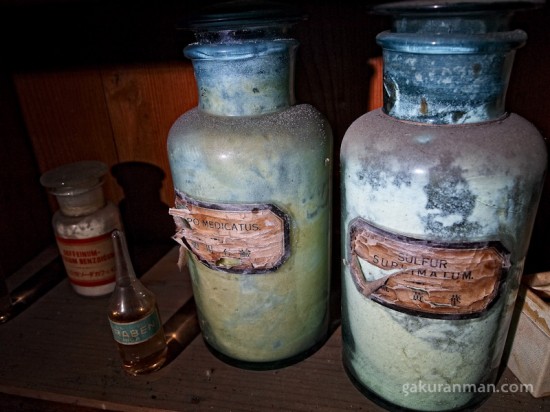
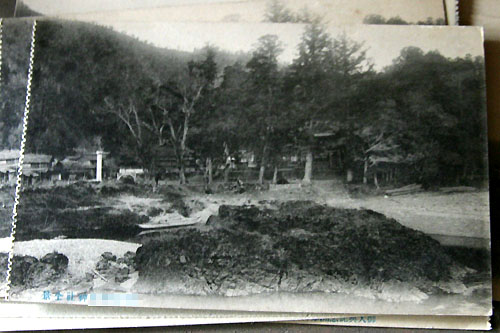
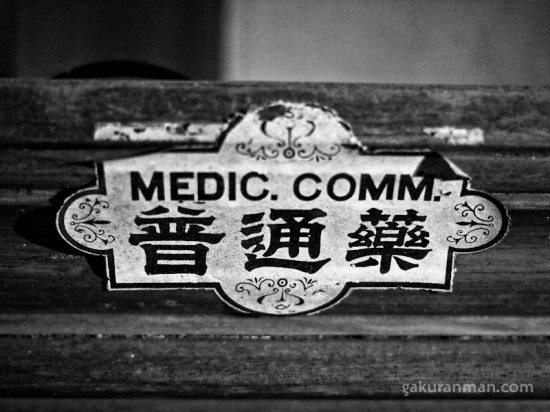
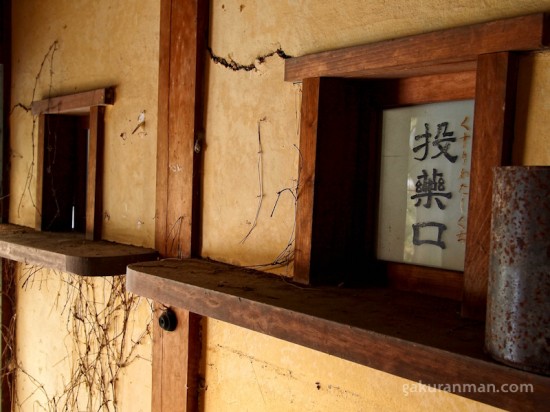


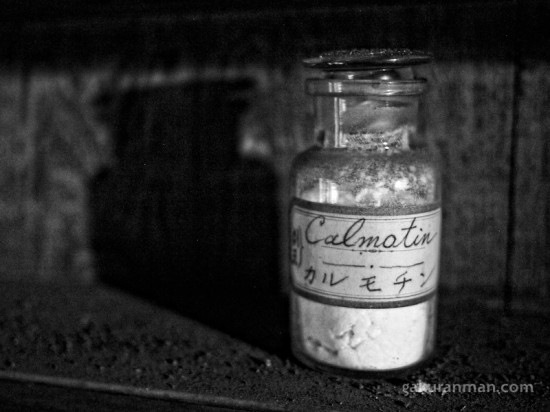
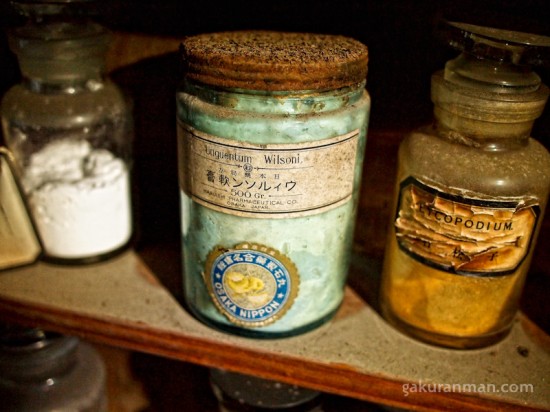
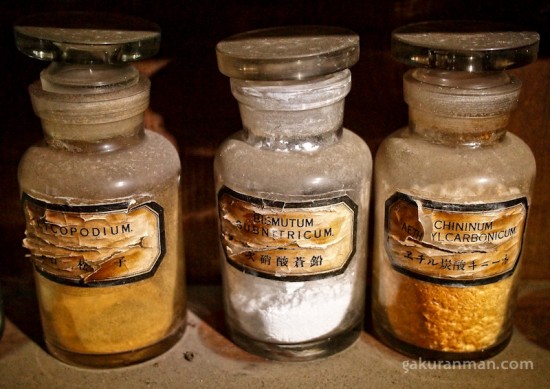
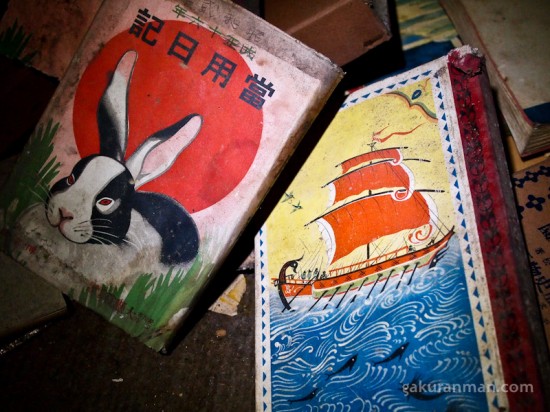
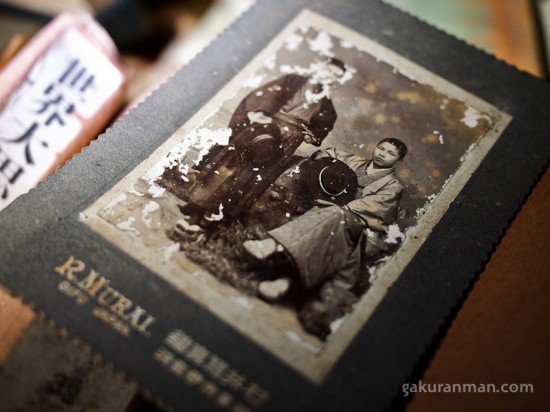
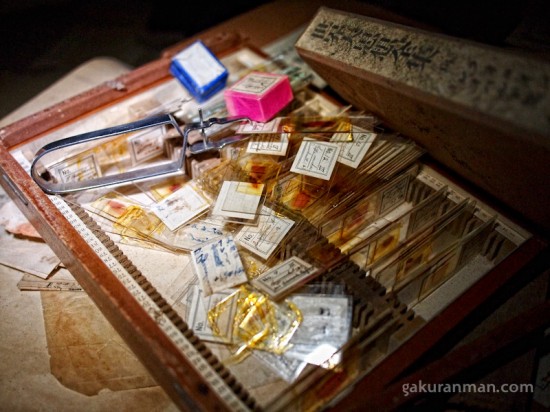
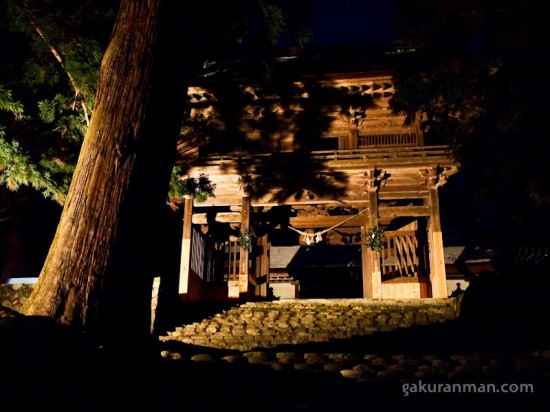
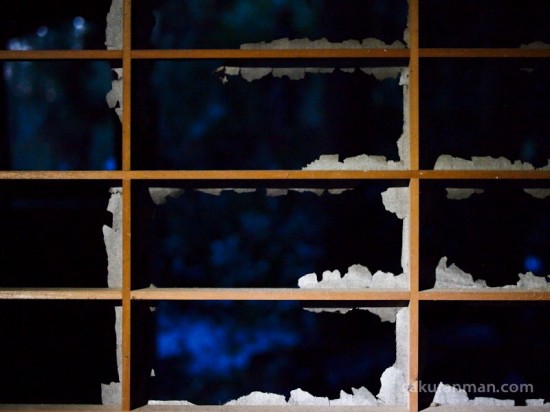
I felt like I was on a journey of exploration into the past just by reading your post. Nice!
wow ! your blog is really inspiring me to travel while do some research more
thanks for talking about the experience of researching and finding haikyo–most people don’t mention this
Gakuraman,
Excellent story! Since coming to Japan i too have become fascinated by haikyo! Absolute treasures hidden in the forests. Went to Maya Hotel a couple years back and also Taro Kozan in Iwate-ken. Great stuff! Will be bookmarking your blog! Thanks!
Great story man, I really enjoyed reading it! You're right, research is half the fun of exploring, and nothing beats the joy of finally discovering that secret place! Well done! :)
Haha. It boggles the mind to think what we'd see if a professional took a look!
Hello. I'm new. ^_^ Great blog.
I like this article because I'm a doctor. Gosh, I wish I could have seen the slides with a microscope. :D
Thanks for the shout-out! Welcome to the site :)
Hey I'm a new visitor! Love your blog!
So fantastic! The photos and video are great! I can't believe that people haven't wanted to preserve something like this! The sheer amount of archaeological/historic data must be soooo amazing. If people haven't been moving stuff around in there too much (or taking things out with them) the established context and historical value would be phenomenal. Do you know if there are any Japanese historical societies devoted to salvaging and preserving these kinds of things or are they pretty much left to become ruins, ashes and dust?
As a side note, (you may already know this, so forgive me if you do) you should handle organic materials in places like that with rubber gloves for both safety and preservative reasons. Sometimes face masks are also recommended if you are going into settings where hazardous molds could have developed. Unfortunately, old texts are liable to disintegrate much more quickly when exposed to the oils from skin after being left untouched for so many years. I have to say, I'm pretty jealous of your explorations!
So fantastic! The photos and video are great! I can't believe that people haven't wanted to preserve something like this! The sheer amount of archaeological/historic data must be soooo amazing. If people haven't been moving stuff around in there too much (or taking things out with them) the established context and historical value would be phenomenal. Do you know if there are any Japanese historical societies devoted to salvaging and preserving these kinds of things or are they pretty much left to become ruins, ashes and dust?
As a side note, (you may already know this, so forgive me if you do) you should handle organic materials in places like that with rubber gloves for both safety and preservative reasons. Sometimes face masks are also recommended if you are going into settings where hazardous molds could have developed. Unfortunately, old texts are liable to disintegrate much more quickly when exposed to the oils from skin after being left untouched for so many years. I have to say, I'm pretty jealous of your explorations!
You paint a very evocative picture! I was intrigued by the subterfuge of this location, is it the source of local legend? Also do you happen to know what happened to make someone leave so suddenly and with their (I'm sure) precious objects left behind?There is something very haunting about a place that is caught in a moment from so long ago…a tempting glimpse of the past. Thank you for sharing your efforts.
I think so, yea. I've seen shots of this place in good light, and it glows with a golden colour. Definitely something I'd like to see :)
Nice write-up Mike, and I especially like the Calmotin shot. Black and white was a good choice. It's just a pity there wasn't more natural light. If you had got there earlier, would it have made much difference?
Sure :). I do try to include background information, but it's tricky to strike a balance between history and the story of the exploration. That, and my policy of not naming places makes it difficult to tell the background. I'll try to include more information where I can though. Thanks for the comment!
Hi there! I enjoyed reading all of your haikyo posts! I find myself wondering how the places become abandoned and so it left me hanging. It would be great if you can include such information, even if those were just legends/myths. Thanks!
Thanks Jason. Yea, the video in my camera isn't great. Even with IS it has that noticeable jelly effect, horrible pickup of AF noises (no external mic attachment) and isn't the best quality despite being HD. That said, it is in such a small package I can't really complain. I wouldn't bother to take a dedicated video camera in addition to my normal camera, so video is really a bonus for me at the moment, though I would like to get better at it.
As for an establishing shot, I completely forgot to take one! With only one hour, I wanted to get inside quickly and it was pitch black by the time we were out. Must get back there are some point with a new wide angle zoom I will acquire soon. Space inside the shack was just too cramped even for the 28mm field on my normal zoom lens.
As for the editing – any thoughts on what i could improve? Still finding my feet, but those tips you gave me before really helped push me onto the right track, I feel :)
Or maybe not 50%, but a significant percentage at least. It depends on your subject matter.
Yes, editing is really 50% of digital photography, unless in perfect light or in a studio, etc, etc.
I like the video look…no commentary though? I liked the camera movement, not bad. Pill shots got a bit repetitive, though they looked fairly sharp. Felt claustrophobic though, I wanted an establishing shot of a room or the entrance to set the scene. Maybe that was what the video was for though.
If you were the first foreigner to track this place down, congrats. I can respect doing real research to track down a place. It shows dedication and a real passion for haikyo.
Hey Cristina! Thanks for your comment :) Whereabouts in Japan are you heading? I can recommend a book with lots of haikyo (including the shack) listed that might be a better start for you. I tend to be reserved about giving out the location to haikyo because of all the problems I could run afoul of, especially since the shack is in a residential area. Nothing personal meant – sorry :(
Completely inspiring, because of you i wish to see the unseen and explore the abandoned. Im going in and exchange in 2 months to Japan from my home, Puerto Rico would love to visit the shack, do u mind giving directions or is it to personal?
Of course. And i'll be a little braver next time as well ^_^.
Yea, this feeling was especially accentuated in the pitch black of the upstairs rooms. I kept worrying the floors would collapse and there was one point when I turned a corner to see a corridor with a gloomy rotten beach chair at the end of it… I've definitely watched too many Japanese horror films to feel at ease in a place like this…
Yea! All that researching throughout the night. You did well to stay awake so long yourself ;). Lots more haikyo to come when you get down to Nagoya soon! Haha.
Thanks Peter! I updated the post with your insight. Turns out somebody over at dpreview.com also found the Lycopodium interesting. Here's the comment from MKCaylor:
“Lycopodium! Love it.
Lycopodium is actually the spores of Lycopodium plants, which are club mosses/ground pines. The spores are all uniform in size, and so back in the day they used the spores as a unit of measurement.
The spores are also highly flammable, and may in this case have been used as a supplement for flash photography.
A really cool experiment with Lycopodium spores is here:
http://www.youtube.com/watch?v=TAdElO1FCSM “
Isn't Giratina and the Sky Bouquet a Pokemon movie? Haven't seen it, but that's a curious reference! ^^; That my pictures remind you of Spirited Way is a real complement. That is a beautiful film.
Thanks Loco :) Glad you thought the writing was better too. Still have a ways to go before I catch up with your quality material though ;)
Cheers! I put a lot more work than usual into them on Jason's advice. Post processing really helps bring out the best!
Great find!
The photographs really make me feel like if I look at any individual one for too long, someone's going to creep up behind me and yell: WHAT ARE YOU DOING HERE?!
Yeah this place was worth the trouble, even if my own photos came out terrible. I can't believe we found it though, good going Mike. You're crazy, but good job anyway ^_^ .
“Not sure what that Ectopodium is though. Anyone a Latin major out there?”
I'm pretty sure that the bottle pictured contains LYCOPODIUM with the Japanese 石松子 written beneath. Information on it is widely available.
It all looks like something out of “Spirited Away” and “Giratina and the Sky Bonquet”
“Every website I visited had gone to the trouble of erasing all mention of the location. Even in the pictures with the shack’s real address, the characters has been blurred out.” Spoooky stuff, but you're right! It was worth it! I love the writing and the pics! Excellent post, and congrats on finding this place, you haikyou hunter you. (-: Loco
I love the pictures. They really capture the best essence of a visit to a recently abandoned ruin. You captured the human elements and the essence of what once happened there very well. It has just the right balance of a sense of eerie abandonment and humanity.